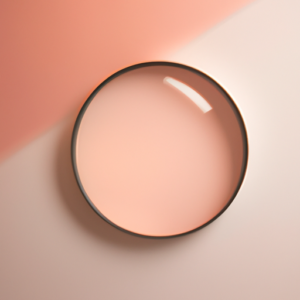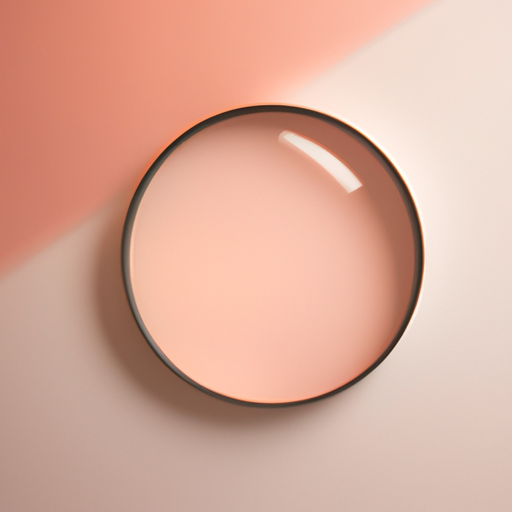The Lowdown on Primers: What They Are and Why You Need One
Hey there, beauties! Are you tired of your makeup looking patchy, creased, or faded by the end of the day? Or maybe you’re struggling with large pores, fine lines, or redness that make your skin look less than flawless? Whether you’re a makeup newbie or a beauty pro, one secret weapon you may be missing in your routine is a primer.
A primer is a product that you apply before your foundation, concealer, or other makeup to prep your skin and create a smooth, even surface for your products to adhere to. Think of it like a base coat for your nails or a primer for a wall before you paint it. A good primer can make a huge difference in the longevity, coverage, and finish of your makeup, and can even help to blur imperfections or correct certain skin concerns.
But with so many different types of primers on the market, and so many conflicting opinions on whether they’re really necessary, it can be overwhelming to know where to start. That’s why I’m here to give you the lowdown on everything you need to know about primers, including what they are, why you need one, and how to choose the right one for your skin type and concerns.
Before we dive into the nitty-gritty of primers, let me first introduce myself. I’m a professional makeup artist with over a decade of experience working with different skin types, textures, and tones. I’ve seen firsthand how a good primer can transform a client’s complexion and help their makeup look flawless from morning till night. And if you still have doubts about whether primers are worth the investment, check out this article that I wrote on achieving flawless makeup.
Types of Primers
Now that we have a clear understanding of what a primer is, let’s dive into the different types of primers available and their varying benefits for specific skin types. There are three main types of primers: silicone-based, oil-based, and water-based.Silicone-based primers are known for their smooth and silky texture and are ideal for those with oily skin. They work by creating a barrier between your skin and your makeup, preventing your makeup from being absorbed into your pores and causing breakouts. Additionally, silicon-based primers fill in fine lines and wrinkles, giving your skin a flawless finish.

Oil-based primers, on the other hand, are great for those with dry skin as they provide an extra layer of hydration. They also work to even out skin texture and allow makeup to glide on seamlessly. However, steer clear of oil-based primers if you have oily skin as they can make your skin appear greasy and cause makeup to slide off throughout the day.
Water-based primers are the most versatile option as they work for all skin types. They are lightweight and provide a subtle glow to your skin, making them the perfect option for achieving a natural, “no-makeup” look. These primers also have the added benefit of being compatible with both water-based and silicone-based makeup products, making them a great choice if you prefer to switch between the two.
In summary, understanding the different types of primers available and their benefits for specific skin types can help you choose the best option for your own unique skin concerns.
Determining Skin Type: The Key to Choosing the Best Primer
Figuring out my skin type was crucial in helping me find the right primer. If you’re not sure whether you have oily, dry, or combination skin, there are a few things you can do to determine your skin type.
For oily skin, you may notice a shiny appearance and enlarged pores, especially in the T-zone area. You might also experience frequent breakouts, blackheads, and excess oil production throughout the day.
Dry skin, on the other hand, can feel tight and flaky, especially after washing your face or taking a shower. You may experience dullness, uneven texture, and fine lines as well.
Combination skin can be a bit tricky to identify because it’s a mix of both oily and dry skin types. You may have an oily T-zone, while the rest of your face is dry or normal. This can lead to blemishes, oiliness, and dryness, all at the same time.
By understanding your skin type, you can choose a primer that addresses your specific needs, such as oil control for oily skin or hydration for dry skin. Don’t worry if you’re still unsure, as a skincare professional can also help you determine your skin type and recommend the best primer for you.
Choosing the Best Primer for Your Skin TypeAs someone who has struggled with finding the right primer for my combination skin, I know firsthand how frustrating it can be to switch through different products without seeing results. That’s why it’s important to first determine your skin type before choosing a primer. For oily skin, opt for a mattifying or silicone-based primer. If you have dry skin, look for a hydrating or oil-based primer. If, like me, you have combination skin, a water-based primer will work best. Don’t forget to also consider any specific concerns you may have, such as large pores or redness, when choosing a primer. When shopping for a primer, I also recommend checking the ingredients list. Look for products that are non-comedogenic and oil-free if you have oily skin. For those with dry skin, ingredients like glycerin and hyaluronic acid can help hydrate and plump the skin. Additionally, if you have sensitive skin, avoid primers with fragrance or alcohol.It’s important to note that price doesn’t always dictate quality when it comes to primers. Some drugstore brands offer great options at an affordable price point, while some high-end brands may not work for everyone. So don’t be afraid to do some research and read reviews before making a purchase.When applying your primer, start with a small amount and build up as needed. Focus on areas where your makeup tends to wear off quickly, such as the T-zone or around the mouth. Don’t forget to let the primer sit for a couple of minutes before applying foundation to allow it to fully absorb into the skin.Choosing the right primer can make a big difference in the longevity and look of your makeup. Don’t get discouraged if it takes a bit of trial and error to find the perfect product for you – it’s worth it in the end!
5. Applying Primer: Let’s Get Your Skin Ready!
Now that you’ve chosen the right primer for your skin type, let’s get ready to apply! Here’s how I prep my skin for makeup that will last all day:
First, make sure your face is clean and moisturized. I like to use a gentle cleanser and moisturizer before applying any makeup. Wait a few minutes for your moisturizer to absorb into your skin.
Next, apply a pea-sized amount of primer to your forehead, nose, cheeks, and chin. Use your fingertips to blend it in, or use a makeup sponge for a smooth, even application. Make sure to cover all areas of your face that you’ll apply makeup to, including your eyelids if you plan on applying eyeshadow.
Wait a few minutes for the primer to set before applying your foundation, concealer, and other makeup. This will help your makeup apply smoothly and last longer throughout the day. Trust me, applying makeup on top of a fresh primer makes a big difference in the overall finish.
Remember, less is more when it comes to primer. Too much can cause your foundation to slide around, so start with just a small amount and build up if necessary. And if you have any areas of your face that tend to get oily, like your T-zone, apply a little extra primer to those areas for extra staying power.
With the right primer and application method, you’ll have a flawless base for your makeup that lasts all day!
Concluding My Primer Journey: Here’s What I’ve Learned
So, that’s all about primers, folks! It’s been an enlightening journey for me, and I hope it has been the same for you too. If you’re still looking for the perfect primer for your skin type, don’t fret. Remember that everyone’s skin is unique, and it could be trial-and-error before finding the one that works best for you.
However, knowing your skin type is the first step in making the right choice. If you have oily skin, go for a silicone-based or oil-based primer that can help mattify your skin and extend the longevity of your makeup. On the other hand, if you have dry skin, opt for a hydrating primer that can plump up your skin and prevent flakiness or uneven application of foundation. If you have a combination skin type, you can choose a water-based primer that can help regulate the oiliness of your T-zone while moisturizing your cheeks.
Now, let’s talk about the benefits of using the right primer for your skin. The most obvious one is that it can make your makeup look smoother and more flawless. A primer can fill in pores, fine lines, and wrinkles, creating a smoother surface for your foundation to adhere to. Additionally, a primer can also prevent your makeup from creasing, smudging, or fading due to sweat, oil, or humidity.
Not only that, but the right primer can also improve the overall health of your skin. Hydrating primers can boost your skin’s moisture levels, preventing dryness and rough texture. Mattifying primers can regulate the secretion of sebum, reducing the appearance of breakouts and blemishes. Some primers also contain antioxidants, such as vitamin C or green tea extract, that can protect your skin from environmental damage and boost collagen production.
Lastly, let’s not forget the importance of applying primer correctly. Remember to apply it after your skincare routine and before your foundation. Use your fingers or a makeup sponge to apply a thin layer evenly all over your face, focusing on areas that tend to get oily or dry. Allow the primer to dry for a few seconds before applying your foundation or concealer.
All in all, using the right primer can make a world of difference in your makeup game and your skin health. So, don’t shy away from trying different types of primers until you find the one that works magic for you. And remember, a little primer goes a long way!
